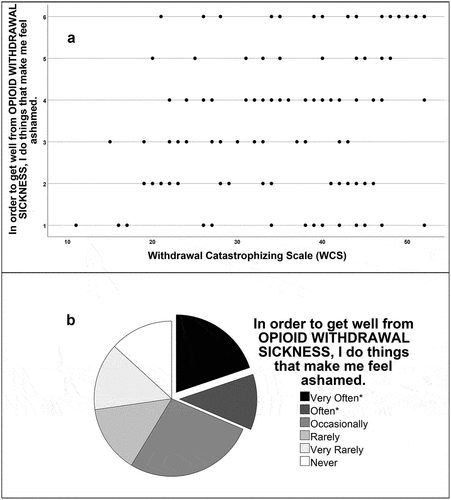Figures & data
Table 1. Sample characteristics.
Table 2. Withdrawal catastrophizing scale (WCS).
Table 3. Correlations between the withdrawal catastrophizing scale (WCS) and original items.
Figure 1. Bar graph representing the percent of participants who endorsed agreement, or strong agreement with each displayed statement.

Figure 2. Path diagram illustrating the two-factor solution of the withdrawal catastrophizing scale (WCS) obtained from exploratory factor analysis. Rectangles representing the 13 items of WCS are shaded to represent the strength of their rotated loading on their associated factor (darker = stronger). Items are also labeled magnification (M), rumination (R), or helplessness (H) based on the schema of the pain catastrophizing scale (PCS) from which WCS is derived.

Figure 3. (a) Scatterplot of the relationship between risk-taking (shame) and WCS, and (b) pie chart representing how often participants found themselves doing things that made them feel ashamed to relieve withdrawal. Asterisks (*) in the key correspond to the two exploded pie pieces in the pie chart.

